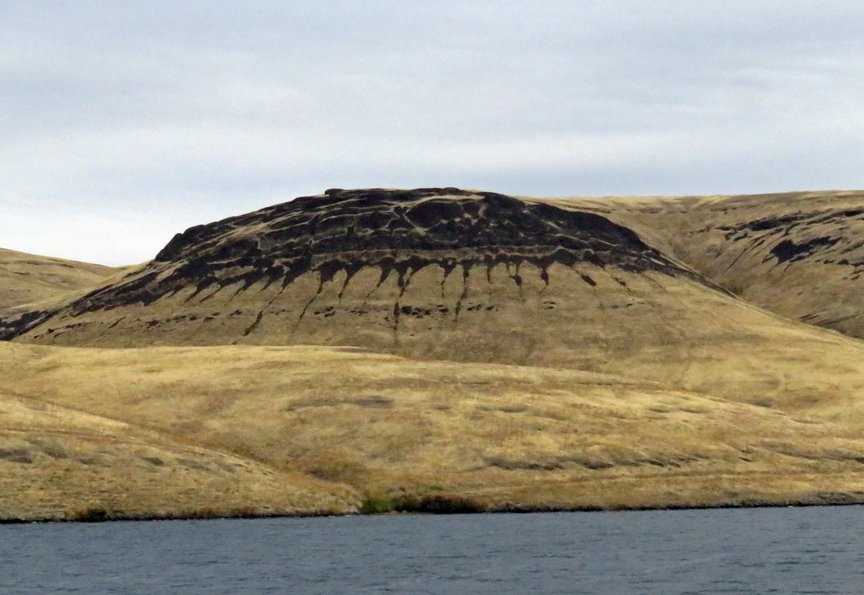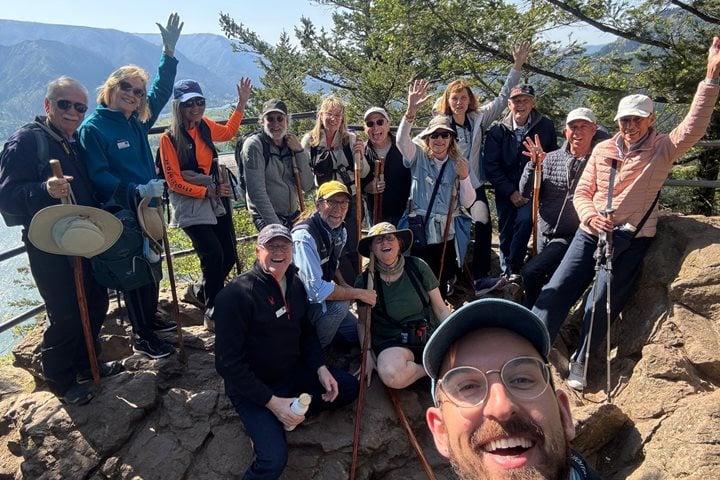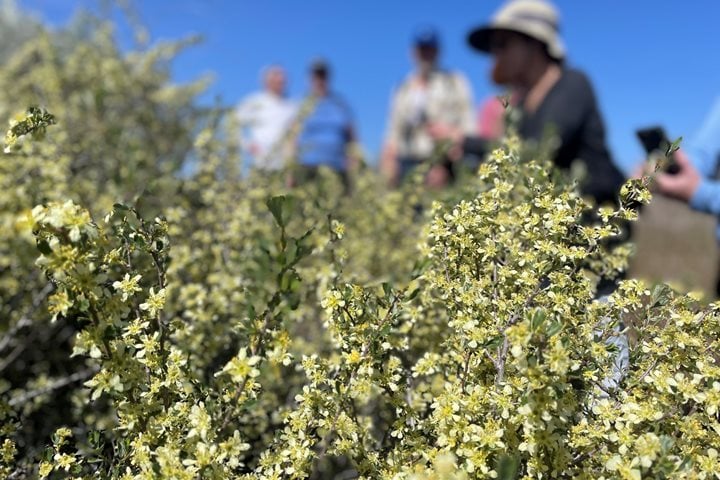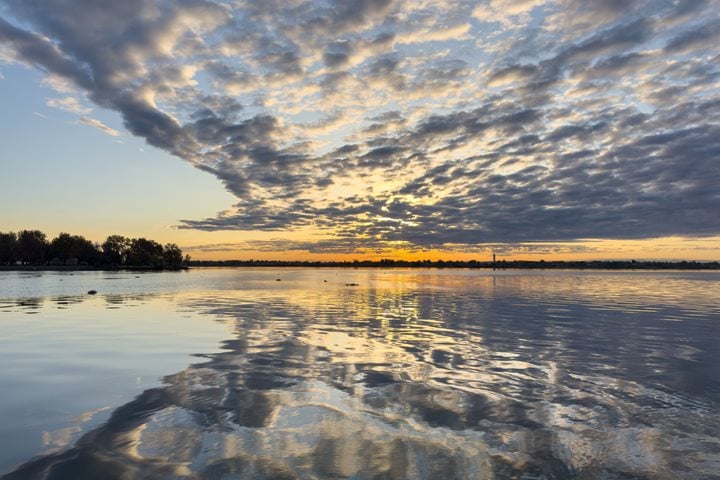In the early light of dawn the National Geographic Sea Bird made her way upstream on the Snake River. A half-moon rode high in the sky. In the bronze light on the water ahead, a white pelican swam at a stately pace across our bow. We were making our way toward our afternoon anchorage on the Palouse River, but first we had a leisurely morning to enjoy the views along the river. A great blue heron squawked as it burst from the river’s edge and flapped past our ship. Four great egrets in their snowy plumage flew ahead of us and landed at the edge of the river. These elegant birds were snow white with long black legs and yellow, stiletto-like bills. Before breakfast we locked through Ice Harbor Dam and were told to look forward to a bit of an adventure when we got to Lower Monumental Dam. Meanwhile, we enjoyed the light wind, the sun, and the beautiful scenery of cliffs of brown basalt stepping up from the river followed by orchards and hayfields. On shore we saw black-billed magpies perched on the broken-down corral. We passed large granaries holding wheat from dryland farms on the rolling hills above the river. Long, long trains roar by going west and carrying oil and coal toward the coast.
Following breakfast our geologist, Grace, gave a presentation on the Columbia River Basalt Province and described the lava flows to us. Then, knowing what to look for, we went right out to see all of this from the deck. In late morning we arrived at Lower Monumental Dam, eager for our adventure. Before we entered, several expedition landing crafts were lowered to the water and many of us donned our life jackets and boarded them. We waited for the National Geographic Sea Bird to enter the lock and then the expedition landing crafts entered too and we tied up to the floating bollards. The great guillotine gate slowly lowered behind us. The water began to enter the lock and we began to rise and rise. We soon found we were high above the river where we entered the lock and were now at the level of the water behind the dam. The upriver gate went down, the lockmaster gave us the green light and we drove out onto Herbert G. West Lake.
We passed Monumental Rock, called “Ship Rock” by Lewis and Clark when they passed here on their way west in 1805. Across the river from this great rock is an outcrop of basaltic lava where the entablature, the highly fractured top of a thick lava flow, has weathered into the most interesting pattern (see photo above). Then it was lunchtime and on to the Palouse River, a tributary of the Snake.
At the Palouse, we dropped anchor, launched the expedition landing crafts again for three different adventures: driving overland through the Channeled Scablands to Palouse Falls, cruising upriver in the expedition landing crafts, and kayaking. Two excellent naturalists, Gretchen and Pete, were onshore when we arrived and met us here for the expedition landing craftscruises. Palouse Falls is spectacular as the Palouse River plummets nearly 200 feet into its dark plunge-pool and then flows away into the Palouse River Canyon. Further downstream the river cruisers enjoyed the scenery of the spectacular weathered, brown basalt cliffs rising high above. A coyote was sighted crossing a high talus slope and ravens played on the wind that swept over the cliffs. American coots swam in a group called a “codgery” of coots. Along the river we stopped to examine cattails, big sagebrush and a netleaf hackberry tree. A flotilla of kayaks was launched from the shore; it was rumored that at least one kayaker was seen caressing the basalt at the base of a cliff that rose straight up from the water.
We were all back on board our ship just in time for our social hour and recap. After dinner our historian, Junius, gave another engaging talk, this one on the plants and animals of the Lewis and Clark expedition.






